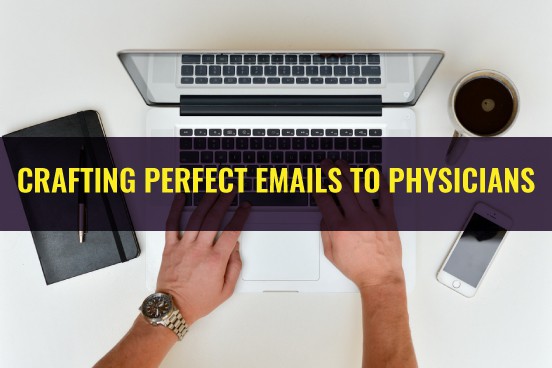I have a confession to make.
Back in 2007 when I joined Abbott Vascular as a Clinical Project Manager, I did not know to write emails. The core function of a project manager is being able to communicate well with all stakeholders. And here I was, afraid of typing and sending emails. I procrastinated for hours to perfect the wording of my email. It wasn’t that I was not familiar with the clinical trial space. I was just afraid and unsure on how to communicate effectively via emails.
My inspiration for this post is based my personal experience working with physicians – the site investigators that conduct clinical trials. I’ve also observed many clinical research associates and managers struggle when it comes to sending emails to physicians or at least don’t craft the email that will lead to a favorable or timely response.
One of the most important components of effectively managing clinical trials is physician communication. Crafting perfect emails to site investigators it’s an important skill all of us need to learn and hone.
In this post, I’ll share with you how I improved upon my email writing skills. We will discuss the process of writing a good email that will result in you getting a response you are looking for.
Write daily
Writing daily is a practice that pushes you to think creatively. Writing daily in your journal, blank piece of paper or a simple word document impacts the way we think and process information. When you write daily, you can write about anything that comes to your mind. Don’t try to correct spellings or control your thoughts. Just write. One website that makes it easier for you to write daily is 750 Words.
Observe how others are writing their emails
If you are already assigned to a project and communicating with clinical sites, observe the tone and structure of the emails. Physicians are busy people and will likely send one liner emails as a response to an email. Therefore they may not be the best person to emulate when you are starting off. Another great resource are emails from your team and your manager. The idea here is the you pick the best email practices that resonate with you and start implementing them right away. You don’t have to get this right from day 1.
Use bullets
This is my favorite tip. Using bullets breaks down information in easily understandable chunks of information. Bullets also help you frame your thoughts and make the process of writing an email much easier. The outcome is clearer emails. I see so many people write long paragraphs (sometimes just one long paragraph) about an issue or topic they are trying to communicate. This is a poor approach to writing emails – especially when writing to physicians who are busy individuals.
Have a call to action
What response do you expect from a physician when you send them an email? Is it just information you are trying to share or you to expect them to respond back to you with specific information. Be clear on the action you expect the physician to take. Also you can use bullets to write your call to action, especially if you have multiple items you need responses to.
Respectful, friendly and professional email tone
Growing up in India, we were always taught to respect physicians. We would address them as “Dr. Shah” and not by their first name. Although I see no issue with addressing physicians by their first name when you have a rapport with them. But if you don’t know the physician, it’s best to default to the “Dr.” or “Professor” salutation. In some countries, “Professor” is considered more appropriate and of higher importance than “Dr.” – so be sure to understand this nuance.
You also want to sound friendly and professional in your email. In other words, don’t sound demanding. Use words such as “please”, “kindly”, “thank you” in your emails. Almost always, I end my emails with “Thank you for your time and consideration” and it works like magic.
Pay attention to formating
It breaks my heart to see unformatted emails – unnecessary bolding of the text, highlighting in red, using upper case fonts, spelling and grammar errors and using different font types in one email reflects poorly on the email sender. It is also distracting to the reader. The most common email formatting error I’ve see if people copy-pasting emails or information from other documents into an email. When you copy information from one source into an email, use the “paste-special” feature to remove unnecessary formatting and ensure the content you are pasting matches the email format. You can also send a test email to yourself to verify if your email is correctly formatted. Making formating errors makes you and the company you represent look sloppy.
Understanding and implementing these email technique will help you achieve the email response you are looking for from physicians. Most importantly, don’t rely solely on email communication, especially for sensitive topics that require an in-person meeting or a phone call.
I hope you found much value from this post. I’d love hear any tricks or tips you have to share or any other thoughts on this post.


1 Thought on "Crafting Perfect Emails to Physicians"
Lisa Paolinelli
June 29, 2022I needed this.
I struggle placing my thoughts on paper, I am to analytical for paper. Bullets are a great idea for me. I need to learn to simplify for paper.
I am a Cath lab coordinator and am used to thinking quickly through what i dont need, getting to the point and sounding that way if you get my meaning.
Regards